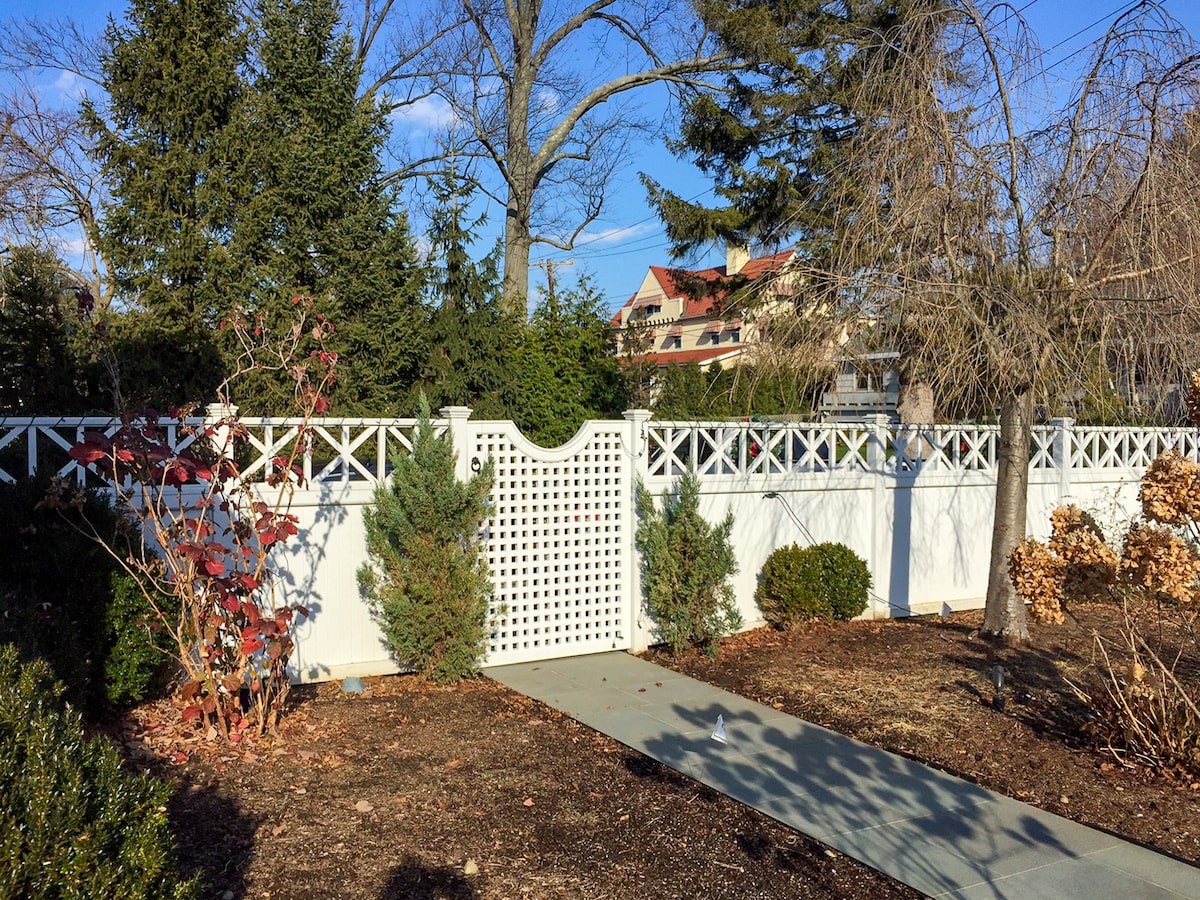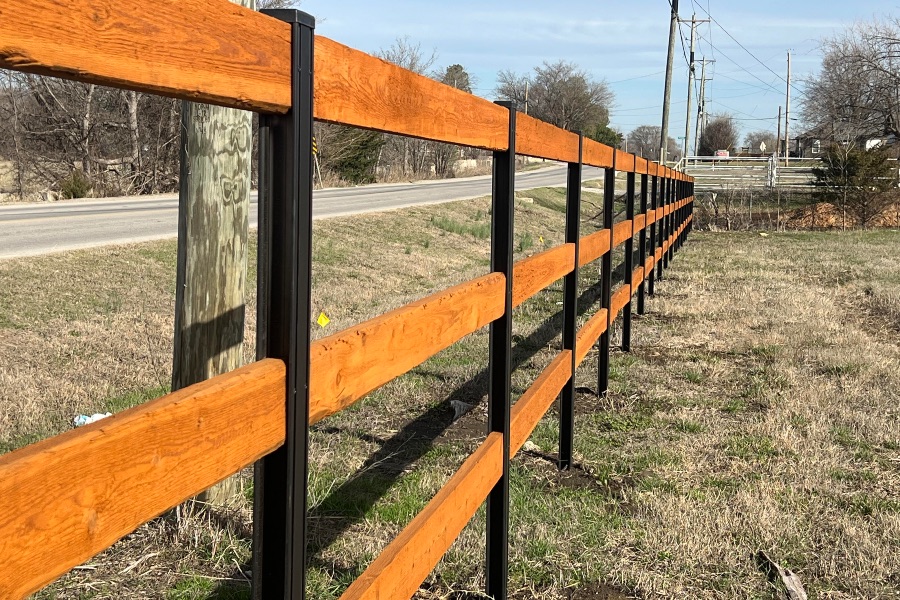All Categories
Featured

Fencings are an integral part of your residential or commercial property, offering personal privacy, safety and security, and visual worth. Nonetheless, they are continuously revealed to the aspects and can experience from weather-related damages gradually. Whether it's solid winds, rainfall, snow, or extreme warm, weather can gradually damage your fencing, leading to expensive repairs or substitute. There are a number of steps you can take to protect your fence from weather-related damage and expand its life-span. Here's just how you can secure your fencing against the aspects.
- Pick the Right Product. The kind of material your fence is made from plays a significant duty in how well it will certainly withstand weather problems. Some materials are naturally much more immune to damage than others. :
Wooden Fences: While traditional and attractive, wood can be susceptible to wetness, rot, and bugs. Pressure-treated wood or cedar can provide far better resistance to these issues. Plastic Fencings: Vinyl is extremely immune to dampness, rot, and insects. It also stands up well to harsh sunlight and heavy rain. Metal Fences: Wrought iron or light weight aluminum fencings are durable and can endure a selection of weather. They can, nevertheless, deal with corrosion gradually, especially if not properly coated. Compound Fences: Made from a blend of wood fibers and plastic, composite fencings are a lot more immune to weather-related damage compared to standard wood fences. Choosing the appropriate material for your region's environment is the primary step in safeguarding your fencing from weather damage.
- Seal or Spot Wooden Fences. Wooden fences are specifically vulnerable to damage from wetness, UV rays, and temperature variations. Among the most reliable means to safeguard your timber fence is by applying a protective sealer or stain. These items help:
Stop Water Damages: Sealants develop a water-resistant obstacle, protecting against dampness from permeating into the timber and causing rot, mold, or mold and mildew. Shield Versus UV Damages: An excellent stain or sealant will certainly also block dangerous UV rays from the sun, which can create wood to dry out, crack, and stain over time. Protect the Fencing's Look: Routine discoloration helps preserve the all-natural beauty of the wood and expands its lifespan. It's suggested to reapply the discolor or sealant every 1-- 2 years to maintain your fence excellent problem.
- Install an Obstacle for Wind Protection. Solid winds can trigger considerable damage to your fencing, particularly if it is high or weak. Wind can bend or damage wood panels, loosen fencing blog posts, or even cause the entire fence to collapse. Setting up a windbreak-- such as growing shrubs, hedges, or installing a mesh barrier-- can assist protect your fencing from high winds.
In addition, you can strengthen the messages with concrete or metal braces to offer additional stability and prevent leaning or moving.
- Trim Overhanging Branches. Overhanging tree branches can present a significant risk to your fencing during tornados or high winds. Falling branches can damage panels or harm the fencing messages, causing pricey repair services. Consistently trim any branches that hang over your fencing, especially if they remain in close distance to it. Maintaining the branches cut down minimizes the danger of branches breaking short and causing damages to the fence.
- Normal Examinations and Maintenance. Executing normal maintenance and assessments is key to capturing prospective issues prior to they intensify. After a hefty tornado, evaluate your fence for any signs of damages, such as loose panels, leaning messages, or broken sections. Looking after little issues before they end up being larger ones can aid extend the life of your fencing.
In addition, cleansing your fencing periodically to get rid of mold and mildew, dust, or particles can assist maintain its appearance and integrity. For wood fencings, carefully pressure wash the surface area to remove built-up crud, and for vinyl fences, use a mild detergent to clean up any kind of discolorations.

- Make Sure Correct Drain. Water damage is one of the most typical weather-related problems that affect fencings. Poor drainage can lead to standing water around your fence articles, which can cause the messages to rot or weaken over time.
- Use a Safety Finish to Steel Fences. Metal fences, such as those constructed from iron or steel, are highly resilient yet can be susceptible to corrosion otherwise properly kept. Using a safety finishing or paint that is specifically developed for metal can aid prevent corrosion and deterioration. Make certain to inspect the fence occasionally for any kind of indications of rust, and address it instantly by sanding and painting the influenced areas.

Verdict. Your fencing is a useful investment, and shielding it from weather-related damages will certainly help guarantee that it remains to offer its objective for years ahead. By choosing the right products, on a regular basis maintaining your fencing, and taking actions to secure it from the components, you can reduce weather-related damages and extend its lifespan. Whether you're dealing with strong winds, heavy rainfall, or the extreme sun, these easy actions can go a lengthy way in protecting the problem and look of your fencing, saving you money and time in the lengthy run.
Latest Posts
Picking the Right Roof Shade: Influence On Energy Performance
Published en
1 min read
Check Out Brake Repair & More: Full Auto Care Solutions from Montclare Auto Repair
Published en
1 min read
Searching for Budget-Friendly Oil Change Solutions in St. Louis? Car-X Delivers Quality Care
Published en
1 min read
More
Latest Posts
Picking the Right Roof Shade: Influence On Energy Performance
Published May 21, 25
1 min read
Check Out Brake Repair & More: Full Auto Care Solutions from Montclare Auto Repair
Published May 21, 25
1 min read
Searching for Budget-Friendly Oil Change Solutions in St. Louis? Car-X Delivers Quality Care
Published May 20, 25
1 min read